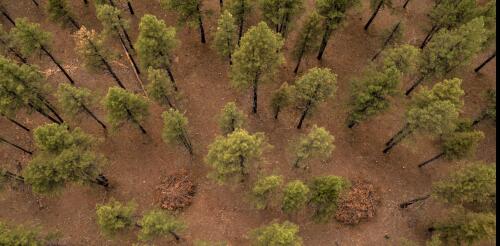Controlled burning
A wet winter and spring followed by a hot, dry summer can be a dangerous combination in the Western U.S. The rain fuels bountiful vegetation growth, and when summer heat dries out that vegetation, it can leave grasses and shrubs ready to burn. Drier than normal conditions, like many regions are experiencing in 2024, also raises the fire risk. In years like this, controlled burns and prescribed fire treatments are crucial to help protect communities against wildfires. Well-staffed fire crews ready to respond to blazes are essential, too. The National Oceanic and Atmospheric Administration Climate Prediction Center’s long-range seasonal forecast for summer 2024. NOAA However, on Feb. 8, U.S. Forest Service Chief Randy Moore told agency employees to expect budget cuts from Congress in 2024. His letter was thin on details. However, taken at face value, budget cuts could be interpreted as a reductio...
The U.S. government is investing over US$7 billion in the coming years to try to manage the nation’s escalating wildfire crisis. That includes a commitment to treat at least 60 million acres in the next 10 years by expanding forest-thinning efforts and controlled burns. While that sounds like a lot – 60 million acres is about the size of Wyoming – it’s nowhere close to enough to treat every acre that needs it. So, where can taxpayers get the biggest bang for the buck? I’m a fire ecologist in Montana. In a new study, my colleagues and I mapped out where forest treatments can do the most to simultaneously protect communities – by preventing wildfires from turning into disasters – and also protect the forests and the climate we rely on, by keeping carbon out of the atmosphere and stored in healthy soils and trees. Wildfires are becoming more severe Forests and fires have always been intertwined in the West. Fires in dry conifer forests...

